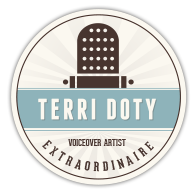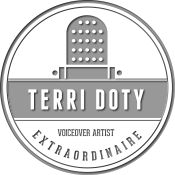Soundproofing or Room Tuning: There’s a difference!
If you want to make it in VO, you’re going to need some kind of home setup. You can go all out for a fully-equipped studio, where you can record, edit, mix, etc for full productions. Or it can even be as simple as a laptop and a USB microphone. The technology is there. Why not utilize it?
Seriously, why not? I ask because one thing I’ve noticed in files and videos that people ask me to check out is the quality or lackthereof. I’m not talking about voice or performance. The voice over artist and microphone are, of course, very important, but I’m talking about sound.
Why can I hear your dog or the airplane that just flew by or the lawnmower going next door?!
I’ll just get studio foam or blankets or something.”
… Let’s talk about proofing and tuning.
The objective of soundproofing is simple: stop sound (i.e. air movement). More dense of a barrier, the better “deadened” a space is.
Insulating the walls is also known as decoupling. This involves putting a piece of dense material like rubber between studding and sheetrock. Fill the walls in-between the studs with rockwool (or whatever your material of choice is). Soundproofing is best done from the ground up. Ideally, you’d place rubber padding in/on the concrete (think hockey pucks), then build on the room from there. In-between the studs add rockwool, then sandwich heavy rubber sheets together before the drywall goes up. You can double up on the drywall, but it tends to make things heavier…so be careful about the strength of your foundation.
Easy, right? Yeah, it can be consuming, both in time and money, but it just might be worth it down the road.
Anyone who references studio foam in relation to soundproofing needs to SHHH! I’ve had my rig for about six years now. It is NOT soundproofed. The studio and booth are simply tuned.
Foam panels reduce reflections, they do not deaden a space entirely. They often give one a false sense of the mix. Sounds can bleed into a microphone and make recordings echoey (give the illusion that files were done in a large room). Bass traps, used as corner fills, control a portion of standing waves. These waves tend to build up, especially in the corners. This sometimes thins out a recording or turns overly bassy, depending on where the waves happen.
Basically, I’m always mindful of the world outside my studio when I’m recording and schedule accordingly. If the client needs an audition right away, I sometimes preface that they may or may not hear something I couldn’t take out in the time allotted (i.e. squawking chickens, thunderstorms, needy dog hanging out just outside the studio doors, and so on).
If you’re SUPER paranoid, like I tend to be, you can also take a good chunk of what annoys you out in post. But it helps to have your Pro Tools black belt. I’m still a purple belt or blue or… I don’t know. Some kind of fuscia probably. Luckily, I have a VERY patient sound engineer to teach me.
Hope at least one person found this useful. Of course, there’s a lot more that goes into setting stuff up. This is just a little taste. Want to know more? Research is your friend. Well, maybe more like a frenemy.
If there’s a topic you’d like me to cover, leave me a comment below or shoot me a message!


Leave a Reply